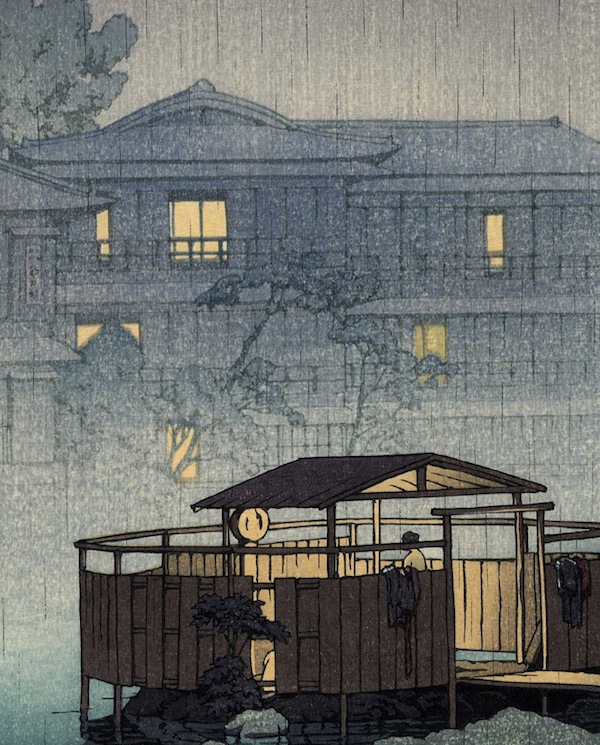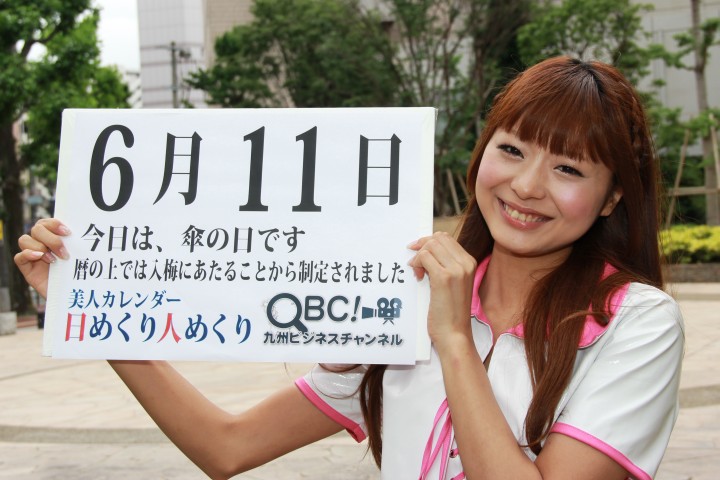The Month of No Water
 Monday, June 25, 2012 at 10:27AM
Monday, June 25, 2012 at 10:27AM
 Tsuyu (梅雨), or the rainy season, began (or should I say the start of tsuyu was officially announced) in the northern half of Kyūshū on the 2nd of June, three days later than usual and fifteen days later than in 2011 when it began on the unseasonably early date of May 21st.
Tsuyu (梅雨), or the rainy season, began (or should I say the start of tsuyu was officially announced) in the northern half of Kyūshū on the 2nd of June, three days later than usual and fifteen days later than in 2011 when it began on the unseasonably early date of May 21st.
I’ve long wondered how the start of the rainy season was determined, for no sooner is the season announced than we experience a week of beautiful, sunny weather. It is as if Mother Nature is snubbing her nose at the meteorologists and saying, “Think ye can’t pin me down, d’ye? Well, take that!”
The answer to this question lies in first understanding why it rains. (To my surprise, it has nothing to do with angels crying.)
From about May to July there is a stationary front over Japan known as the baiu zensen (梅雨前線, the seasonal rain front). Check a weather map of Japan at this time of year and you’ll find a horizontal front with semi-circles on the northern side and triangles on the southern side. According to wikiHow, this indicates a stationary front, or a non-moving boundary between two differing air masses. Because of this front, long continuous rainy periods can be expected to linger in the area affected.
In East Asia, air masses of differing temperatures and humidity from areas of high atmospheric pressure over the Sea of Okhotsk and the Pacific Ocean meet along the baiu zensen front, creating clouds and rain. The strength of these two regions bumping up against each other prevents the front from dissipating.
When there has been a number of days of unsettled weather and it looks likely to continue to be rainy or cloudy for the next several days, the Japanese Meteorological Agency will announce that a particular region of Japan has entered the rainy season (梅雨入り, tsuyu iri). Similarly, the end of the rainy season (梅雨明け, tsuyu ake) is announced when the rains have stopped and there has been a period of sunny days. If the past is anything to go by, the rainy season will end in the northern part of Kyūshū around the 15th of July, or just in time for the Hakata Gion Yamakasa festival.
While the mechanics of the tsuyu are fairly straight-forward, there are a number of aspects about the season which can be somewhat confusing to foreigners. (They were at least to me.)
The first question many people have concerns the name of the season: tsuyu (梅雨)—literally, “plum rain”. Why, do you ask, is the season called “plum rain” when Japan’s beloved plum blossoms (梅の花, ume no hana) bloom in late winter (typically February where I live)? Because, holds one theory, the rainy season coincides with the picking of plums for making plum liquor (梅酒, umeshu) and pickling (梅干し, umeboshi).
Another theory maintains that the original name for the season was baiu (黴雨, literally "mold rain") what with the high humidity level and heat creating the perfect condition for mold to grow. The “moldy” half of the name, 黴 (bai), was replaced with the Chinese character for plum, 梅 (bai, ume), which could also be read the same way. Lending some credence to this theory is that fact that in China the rainy season is also written 梅雨 (though pronounced “méiyǔ”) and is called by some people 霉雨, where 霉 can also means “mold”.
Interestingly, the kanji for plum, 梅, contains the “radical” 毎 in it which means “every” as in “every day”, giving the word 梅雨 (baiu) the sense of it raining every day. In Korea the name for the season is jangma (장마, literally “long rain”).
The second question people have regarding tsuyu is the traditional name of the month in which the rainy season falls: Minazuki (水無月)—literally, “no water month”. Why on earth would a month be called that when it rains all the time?
A look at the Western calendar is instructive. While September is now the ninth month of the year, the name actually means “seventh month”. In ancient calendars (prior to 1752) September was considered the seventh month, October the eighth month, November the ninth, and so on. The summer months of July (Julius Caesar) and August (Augustus Caesar) today were formerly known as Quintilis and Sextilis (the fifth and sixth months of Romulus, respectively) in the 10-month calendar of ancient Rome in which the year started in March.[1] (Winter, interestingly, was considered a monthless period. Sometimes it feels that way to me, too.)
The Japanese calendar experienced a similar change in the latter half of the nineteenth century when Tenpōreki, a lunisolar system used for just under thirty years from 1842 to 1872, was abandoned in favor of the Gregorian calendar. In two days, Japan went from being the second day of the twelfth month of the fifth year of Meiji (明治5年12月2日) to being first day of the first month of the sixth year of Meiji (明治6年1月1日).[2] The old calendar, called kyūreki (旧暦), is still used for traditional events, the marine products industry, and fortune-telling. Some calendars today show both dates.
Because of the shift from a lunisolar calendar to a sun-based one, the former names of the months are sometimes off by several weeks. Today, the 25th of June, for example, is only May 6th according to kyūreki. May (五月, Gogatsu) is also known by its former names Satsuki (五月 or 皐月, “five month”) and Samidare (五月雨, also read satsuki ame) which means “May rain”. It is synonymous to the rainy season. The old name for June, Minazuki (again, the month of no water), is aligned more closely to the drier month of July in the former calendar. Some believe the name may also derive from the great need for water for rice planting which occurs during this time of the year.[3]
One final note about the rainy season. If you look at June 11th on a traditional Japanese calendar, which gives both modern and kyūreki dates, you may see the word 入梅 (nyūbai, lit. "enter + plum"). During the Edo Period, the rainy season was believed to begin on or around June 11th. My wife's maternal grandmother, incidentally, was born on nyūbai and given the name Tsuyu by her parents. The poor girl.
She has since passed, but is still remembered today as Tsuyu Bāchan (Grandma Rainy Season).
Oh, yes, almost forgot: the eleventh of June is also known as Kasa no Hi (傘の日, "Umbrella Day").

This post was revised on 2 June 2014.
[1] In 1752, at the same time that England adopted the Gregorian calendar, New Year’s Day was changed from March 25th to January 1st, messing up the meaning of the names of our months forever.
[2] England, which did not adopt the reformed Gregorian calendar until 1752 (170 years late), had to suppress eleven days in order to align its calendar with the Gregorian.
[3] Taue (田植え), or the planting of rice, usually takes place in early June in northern Kyûshû with the harvest following in October. In Okinawa, it can happen as early as April. Some places in southern Kyûshû are able to get two rice plantings in a single year.
